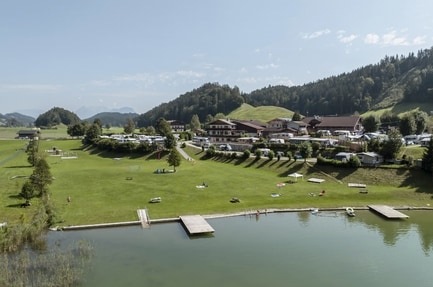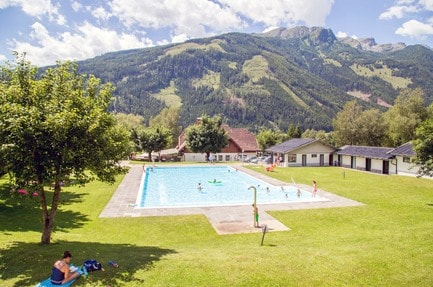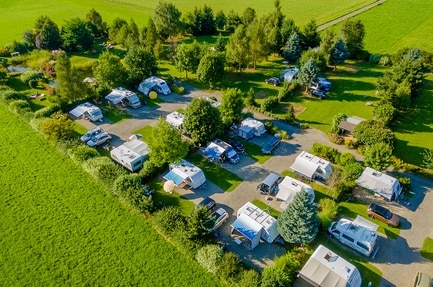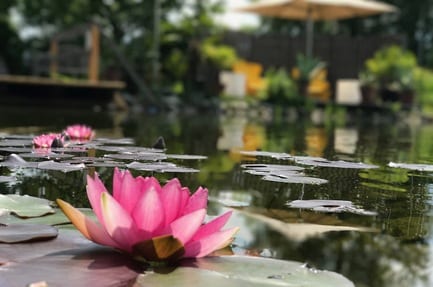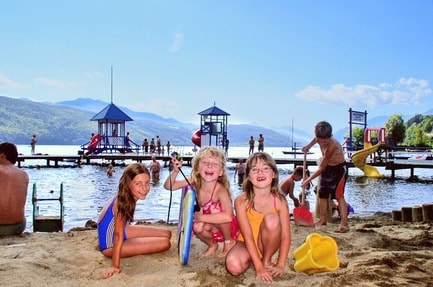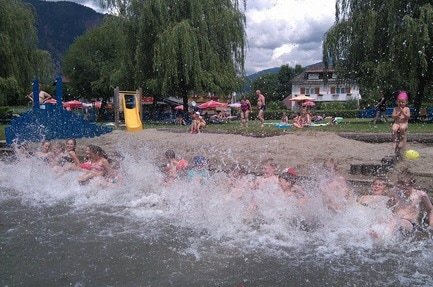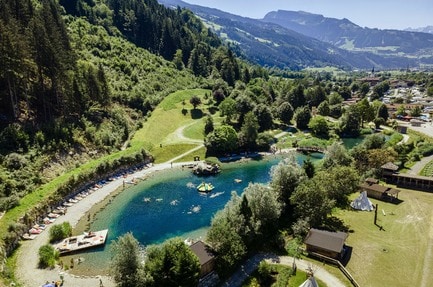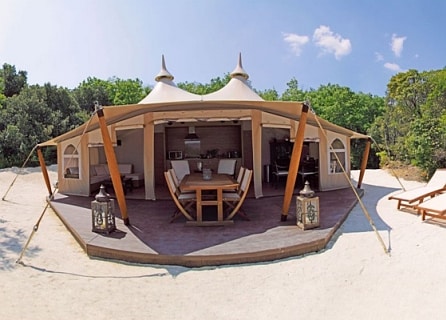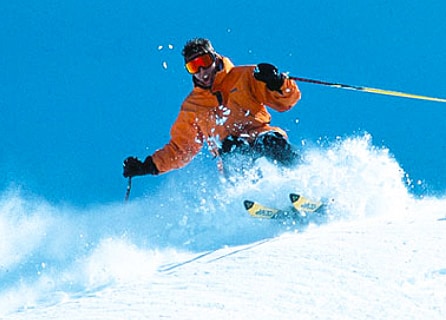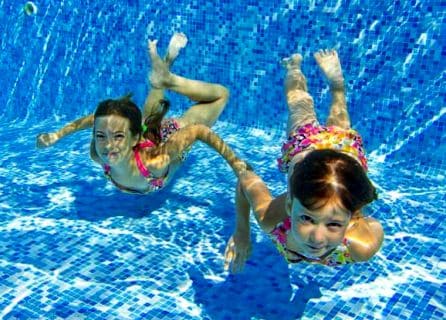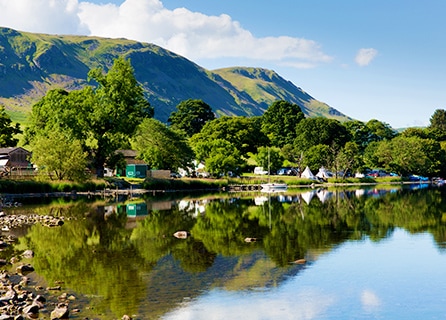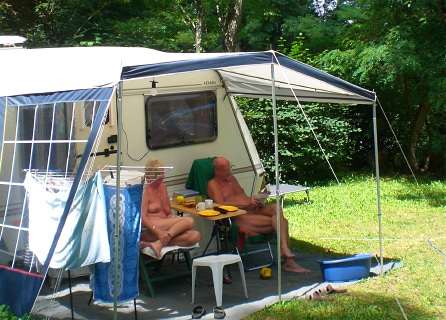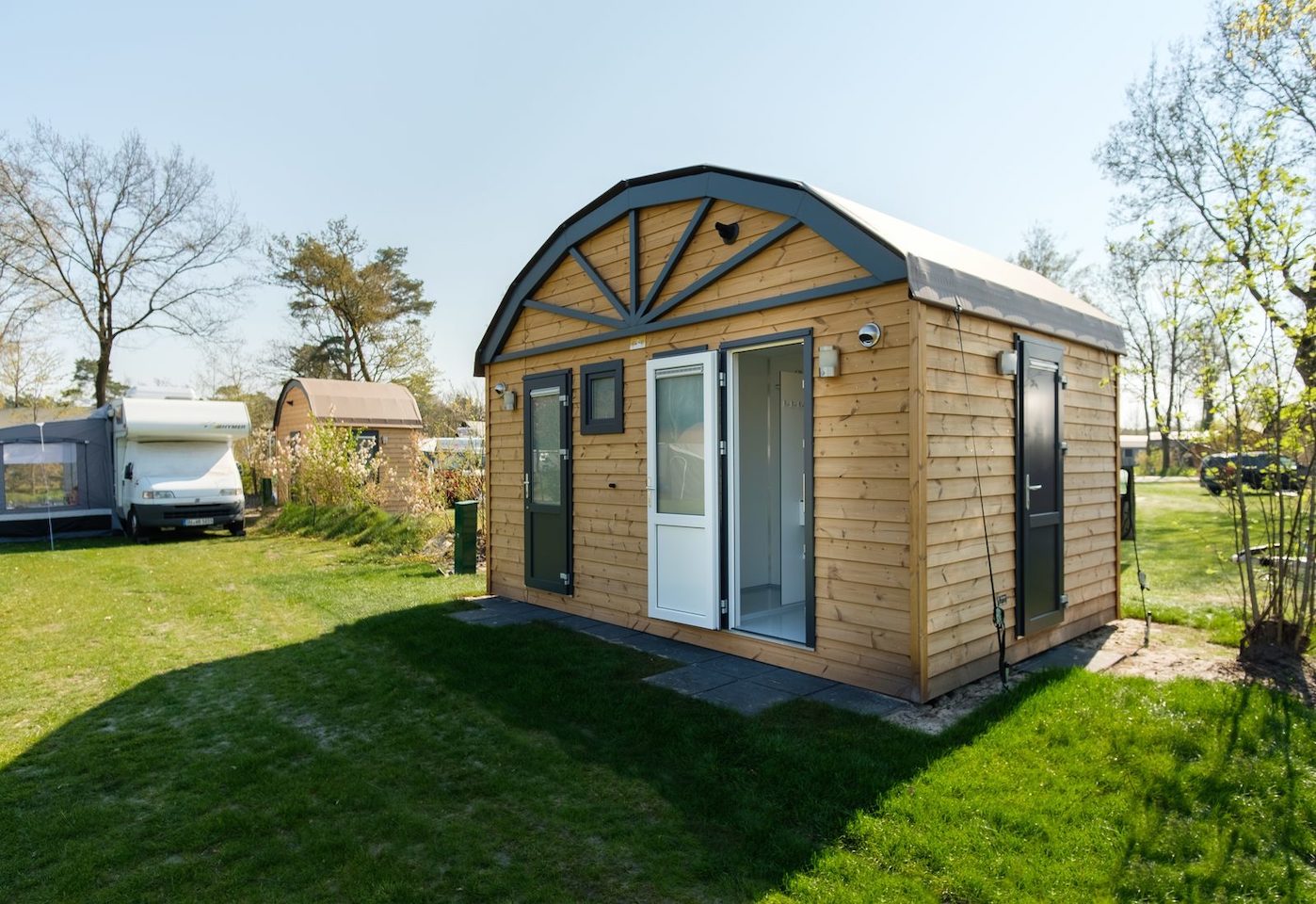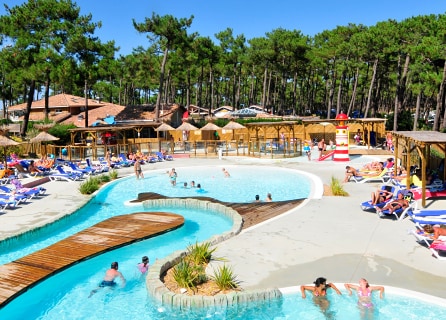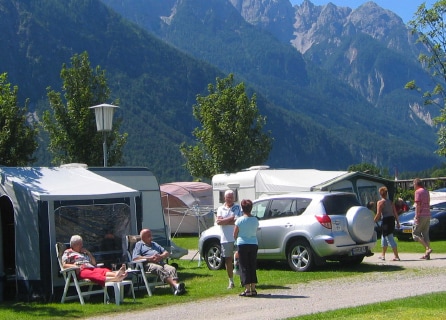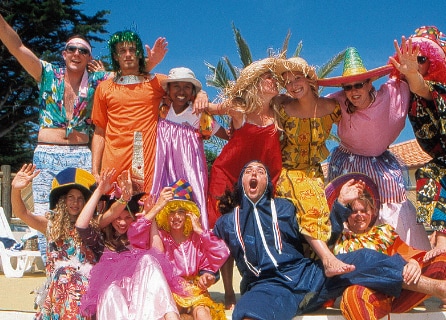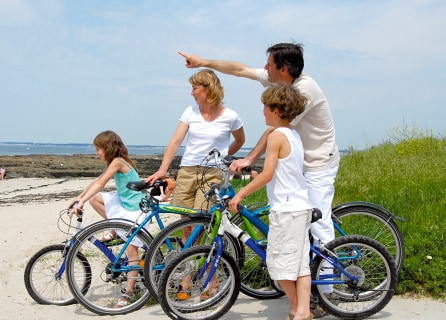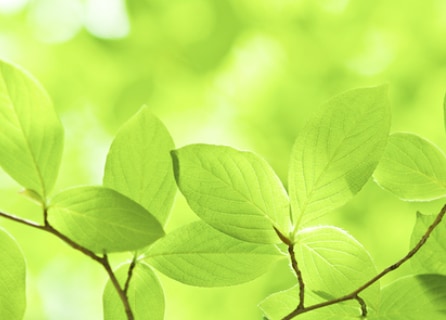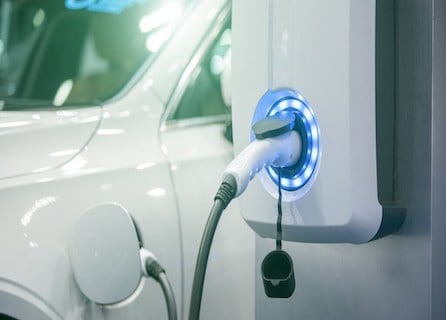Camping in Austria: amid nature
If you think of Austria, you think of the Alps. The famous mountains provide an extremely varied and unique landscape. Beautiful alpine meadows with panoramic views, stunning gorges you can walk through and deep caves you can explore; and these are just some of the things you can do in this beautiful Alpine country. You mainly find the high Alps in the south and west of Austria. In the east and north of the country it is hilly in comparison to the high Alps.
Holidaying throughout the year
Wherever you camp in Austria, it is beautiful. And that makes perfect sense considering almost half of Austria consists of forests. It doesn't get greener than that! Throughout Austria, you will find many campsites at exceptional locations in the countryside. In Austria, you can go to many campsites in the summer as well as in winter. Many campsites in Austria are genuine winter sports campsites, complete with special amenities for skiers. In the summer, it's great for walking and cycling and visiting beautiful cities.
Active outdoors
You have a vast choice of great outings and activities in the mountains and hills of Austria. Consider the Eisriesenwelt, the World of the Ice Giants. This cave – at roughly 40 kilometres from Salzburg – has the longest and deepest ice caves in the world. If you'd prefer a warmer outing in the outside air, have a go on a real toboggan run! That's fun to do in summer as well as in winter. Or, even more spectacular, have a go at 'via ferrata' for an afternoon.
This is a light form of mountain climbing suitable for the whole family.
Tradition and culture in the three major cities
Austria is more than just mountains and countryside. Culture enthusiasts will enjoy themselves in big cities such as Salzburg, Innsbruck and Vienna. For example, go to the famous Spanish Riding School in Vienna, one of the oldest horse training schools in the world. And if you are in Vienna, the Schloss Schönbrunn is a must. The Baroque Salzburg is also certainly worthwhile. Here, you learn all about its most famous resident, Mozart. You could spend days wandering around the historic buildings and stunning parks in Salzburg.
Important information for your trip to Austria:
Fuel
Petrol (Super/Bleifrei 95 and Super Plus 98) and diesel are widely available. LPG is hardly available. For LPG, some fuelling stations use the European connector (Acme) and others use the Italian connector (Dish).
Fuelling stations on motorways and in big cities are usually open 24 hours a day, others are open between 8 am and 8 pm. There are also many that work in automatic mode at night and unstaffed fuelling stations in Austria.
Charging
New charging stations are added daily. You will find most of them around the big cities and close to the main roads. There are also plenty of charging points in winter sports areas. In Austria, just like for every country, if you travel using an electric car make sure you plan your trip well!
Traffic regulations
Dipped headlights are compulsory during poor visibility, in the dark and in tunnels. At an uncontrolled intersection, traffic from the right has priority. Traffic on a roundabout has priority if indicated with traffic signs. Trams always have priority. On narrow mountain roads, traffic that can move over the easiest must give priority.
You may not have telephone in your hand behind the wheel, not even when stopped (you can call hands free). Children up to 14 years and under 1.50 metres in height must be in a child's car seat.
You are allowed to use your navigation system to notify you of speed cameras and trajectory speed controls. Winter tyres are compulsory from 1 November to 15 April in wintry conditions (snow chains could be made compulsory by means of a sign).
Special regulations
Smoking in the car is prohibited in the presence of children under 18 years.
In traffic jams, you should stay as far to the right or left as possible to create a free lane in the centre (Rettungsgasse) for emergency service vehicles.
Parking is prohibited next to yellow lines and in zones marked with a yellow zigzag stripe, among other places. A flashing green traffic light means that the light will soon turn orange.
Emergency phones have flashing lights that warn you of, for example, cars travelling in the wrong direction, traffic accidents or traffic jams. Before driving it is compulsory to make your car snow and ice free (the roof too).
You are not allowed to leave your car running while stopped for a lengthy period, such as at a level crossing or when de-icing the car.
Mandatory equipment
It is compulsory to have a warning triangle, safety vest and first aid kit in the car.
Caravan and motorhome
A motorhome or car-caravan combination can be a maximum of 4 metres in height, 2.55 metres wide and 18.75 metres long (the caravan itself can be up to 12 metres long).
It is compulsory to have a wheel block with you for caravans with a maximum permissible mass of over 0.75 tonnes.
Outside built-up areas, a car-caravan combination must maintain a distance of at least 50 metres in relation to other combinations and lorries.
Cycling
Children up to 12 years old must wear a bicycle helmet on a bike (also on the back). In Lower Austria, it is compulsory up to 15 years. You may not call or text while on a bike. Children up to 8 must be in a child's bike seat on the back with someone who is at least 16 years old. Children may not be transported in a child's seat on the handlebars. Children up to 12 years old may cycle on the road unaccompanied. Cyclists are only allowed to cycle next to each other on bicycle paths.
Toll
In Austria, you need an ‘Autobahnvignet’ to use the motorways. You can buy a vignette (sticker) for 10 days, 2 months or a year. You can buy the toll vignette at fuelling stations and post offices close to the border.
For addresses: asfinag.at/maut-vignette.
It is advisable to buy the motorway vignette online in advance, for example via tolltickets.com. The vignette must be placed on the inside left of the front windscreen.
Besides the normal vignette, you can also get a 'digital toll vignette'. This digital vignette is registered by number plate and can be ordered online via shop.asfinag.at. Order this digital vignette at least 18 days before your desired starting date. The price and validity of the digital vignette are the same as the normal vignette. You do not need an additional vignette for caravans and trailers.
Toll specifications
Vehicles weighing over 3.5 tonnes (also motorhomes) pay a toll per kilometre via a so-called GO-Box. This box is available at the border.
More information: go-maut.at.
With the completion of the Pfänder tunnel, the ‘Korridorvignette’ has been discontinued. On the 23-kilometre route on the A14 Rheintal/Walgau between the German border and the Hohenems interchange in Vorarlberg, you now need an Autobahnvignet or GO-box.
Off the motorways, Austria has several so-called 'Sondermautstrecken' and mountain passes you must pay a separate toll for.
More information: asfinag.at/toll/route-and-digital-section-toll/route-rates and oeamtc.at/poi.
Environmental zones
Some regions have set up environmental zones for vehicles weighing over 3.5 tonnes and you need an environmental sticker.
More information: green-zones.eu/nl/
Breakdown and accident
On a motorway, place your warning triangle at least 200 to 250 metres (elsewhere at 150 metres) behind the car if it is not clearly visible to other traffic. The driver must put on a safety vest.
If you breakdown, call the emergency number of your breakdown assistance insurer. You can also call the Austrian breakdown assistance service: 120 (ÖAMTC) and 123 (ARBÖ). On motorways, you can also call for breakdown assistance using an emergency phone (Notruftelefon). Towing is allowed on the motorway up to the first exit.
Camping
Austrian campsites are among the best in Europe. Carinthia springs to mind for its excellent location, stable climate and beautiful lakes. Many campsites in the Tyrol specialise in wellness or focus on sportive camping guests.
Wild camping outside registered campsites is only allowed if you have permission from the local authorities or landowner.
Many Austrian campsites are also open in the winter, mainly in Vorarlberg, Tyrol and Salzburg.
Additional charges for things such as tourist taxes and environmental charges are sometimes quite high.
Overnight stays in caravans, motorhomes or cars away outside recognised campsites are permitted for one night if in transit, except in Vienna, Tyrol and national parks.
Practical
In the Alps, inclines of 6 to 15% and more are common. Most mountain roads have crash barriers on the valley side.
Take note: Mountain passes in Switzerland, Austria and Italy could be temporarily closed, difficult to access or even permanently closed off to cars with a caravan or trailer. Check this before you travel.
More information: alpenpaesse.de (in German).




